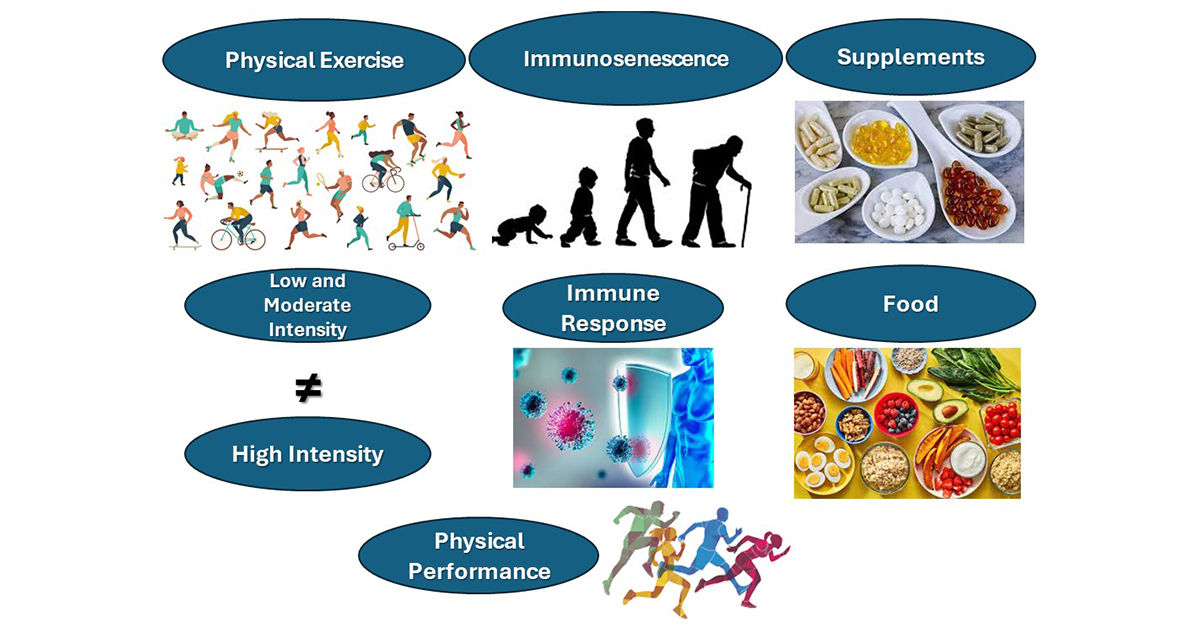- 5.0Impact Factor
- 9.1CiteScore
- 13 daysTime to First Decision
New Insights into the Effects of Exercise, Nutrition, and Supplementation on Aging and Health
This special issue belongs to the section “Geriatric Nutrition“.
Special Issue Information
Dear Colleagues,
There is a growing body of scientific evidence demonstrating the beneficial effects of non-pharmacologic interventions, such as physical activity, nutrition, and dietary supplements, in preventing and helping in the treatment of diseases, as well as promoting healthy aging. Beyond that, adequate nutritional support, including dietary supplements, is proven to be beneficial for recreative and professional athletes, leading to better performance, preventing injury, and improving recovery. In this context, several pre-clinical studies (in vitro, ex vivo, and in animal models) have been performed, aiming, for the most part, to demonstrate the cellular and molecular mechanisms involved. In addition, many studies have demonstrated not only the clinical outcomes obtained in different populations resulting from physical activity and nutrition interventions but also the immunological mechanisms involved in such effects. On the other hand, excessive physical activity, dietary supplements, or the wrong dietary strategy may result in injuries, favor the establishment of diseases, or even cause exacerbations of diseases. So, in this wonderful, great, and complex world of exercise, nutrition, and immunology, we invite our colleagues to submit their mini-review, review, systematic review, and original (pre-clinical and clinical studies) to our Special Issue in the journal Nutrients, which has been entitled “New Insights into the Immunomodulatory Effects of Exercise, Nutrition, and Supplementation on Aging, Health, Disease, and Performance – What Have We Learned from Pre-clinical and Clinical Studies?”.
Prof. Dr. Rodolfo de Paula Vieira
Dr. André L.L. Bachi
Guest Editors
Manuscript Submission Information
Manuscripts should be submitted online at www.mdpi.com by registering and logging in to this website. Once you are registered, click here to go to the submission form. Manuscripts can be submitted until the deadline. All submissions that pass pre-check are peer-reviewed. Accepted papers will be published continuously in the journal (as soon as accepted) and will be listed together on the special issue website. Research articles, review articles as well as short communications are invited. For planned papers, a title and short abstract (about 250 words) can be sent to the Editorial Office for assessment.
Submitted manuscripts should not have been published previously, nor be under consideration for publication elsewhere (except conference proceedings papers). All manuscripts are thoroughly refereed through a single-blind peer-review process. A guide for authors and other relevant information for submission of manuscripts is available on the Instructions for Authors page. Nutrients is an international peer-reviewed open access semimonthly journal published by MDPI.
Please visit the Instructions for Authors page before submitting a manuscript. The Article Processing Charge (APC) for publication in this open access journal is 2900 CHF (Swiss Francs). Submitted papers should be well formatted and use good English. Authors may use MDPI's English editing service prior to publication or during author revisions.
Keywords
- immunonutrition
- exercise immunology
- immuno aging
- immunosuppression
- nutrition
- dietary supplements
- sports performance

Benefits of Publishing in a Special Issue
- Ease of navigation: Grouping papers by topic helps scholars navigate broad scope journals more efficiently.
- Greater discoverability: Special Issues support the reach and impact of scientific research. Articles in Special Issues are more discoverable and cited more frequently.
- Expansion of research network: Special Issues facilitate connections among authors, fostering scientific collaborations.
- External promotion: Articles in Special Issues are often promoted through the journal's social media, increasing their visibility.
- e-Book format: Special Issues with more than 10 articles can be published as dedicated e-books, ensuring wide and rapid dissemination.

